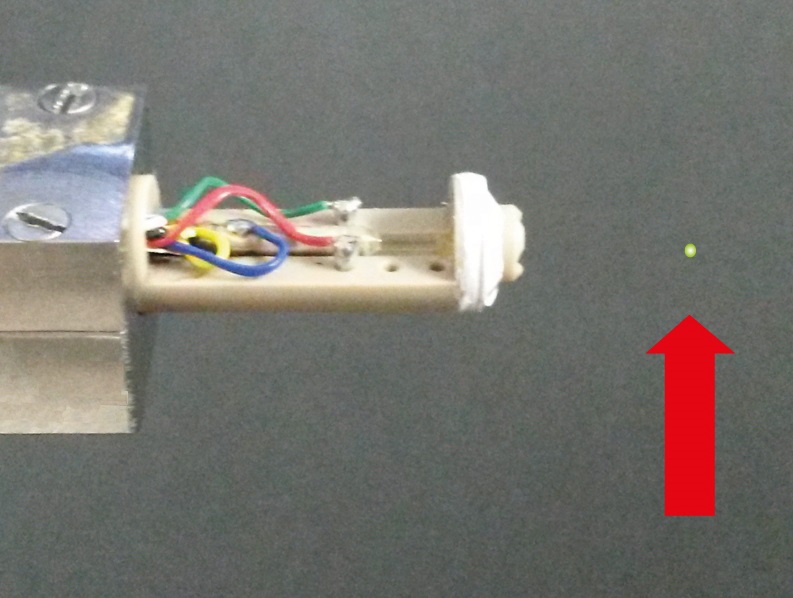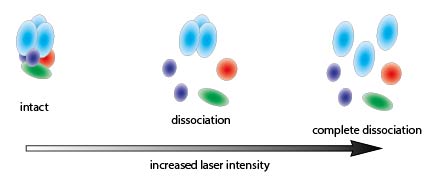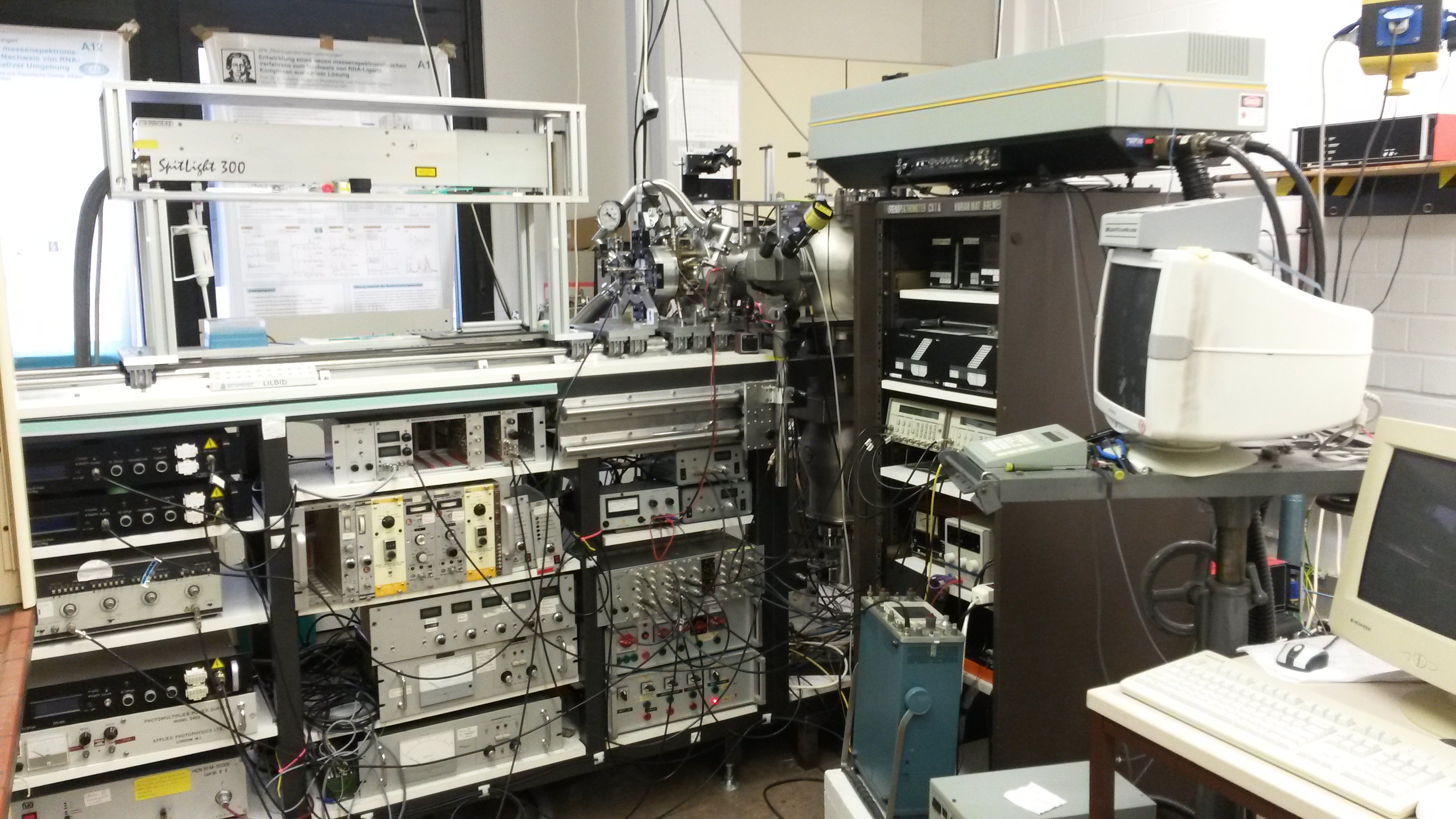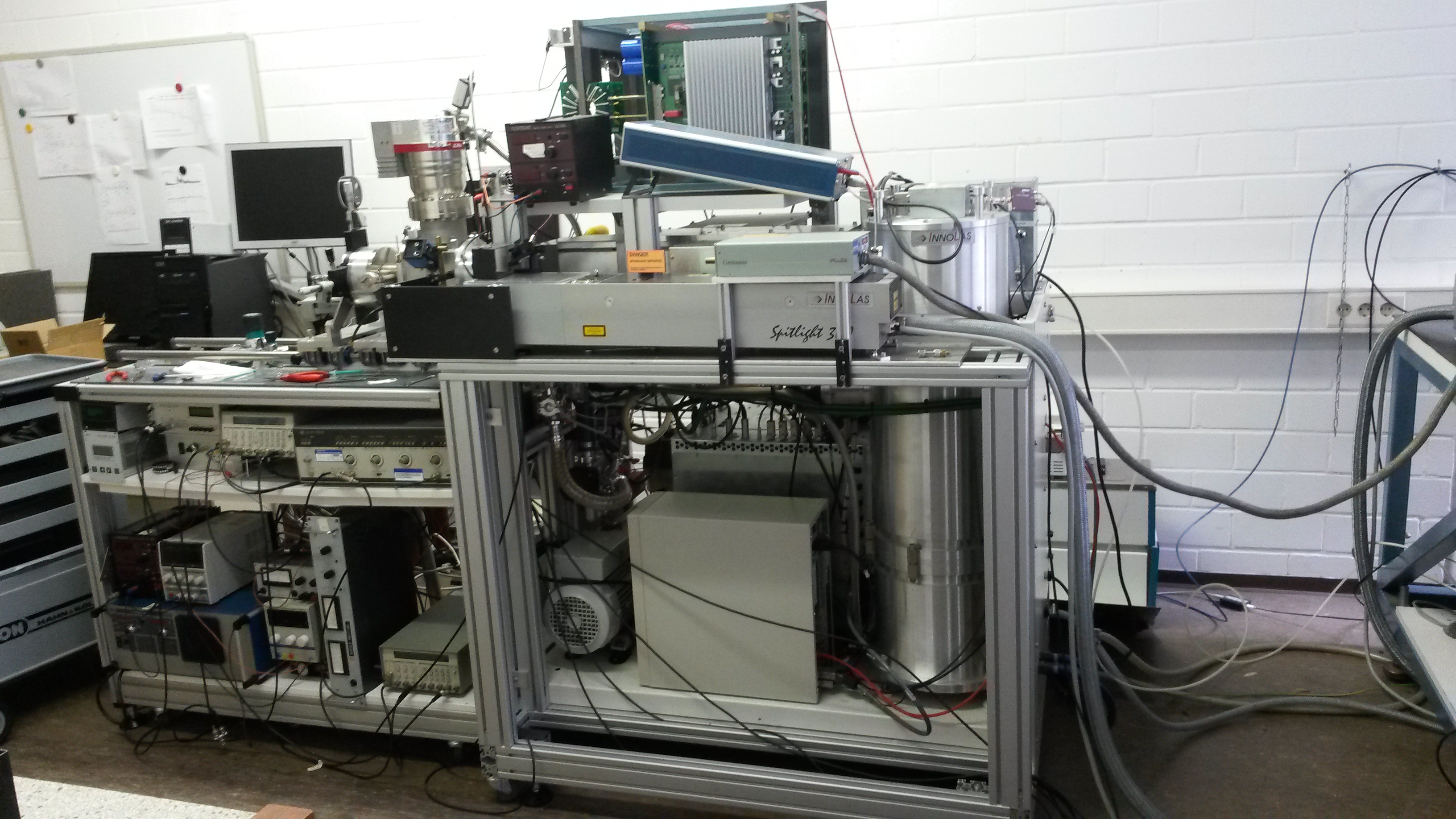LILBID (Laser Induced Liquid Bead Ion Desorption)

Microdroplets (50 μm diameter) of the sample solution are introduced into vacuum with the help of an on demand droplet generator. There they are irradiated one by one by a mid-IR laser which runs at the same frequency (10Hz).
The laser wave-length is tuned to the absorption maximum of water at around 2.94 μm - the H-O stretching vibration of water. The absorbed laser energy leads to the explosion of the droplet, releasing the biomolecular complex ions into vacuum, where they can be analysed by a time-of-flight mass analyser. The incomplete ion neutralisation process leads to gas phase ions whose charge state mimic the charge states of the complexes in solution.

Variation of one parameter - the intensity of the desorption laser - determines the harshness of the method. Under soft conditions the complexes stay intact, while at harsh laser conditions the non-covalent bonds break, revealing the constituting subunits. At medium conditions stronger bonds can stay intact, exposing stable subcomplexes.

Instrumentation:
LILBID instrument
1st generation

LILBID instrument
2nd generation